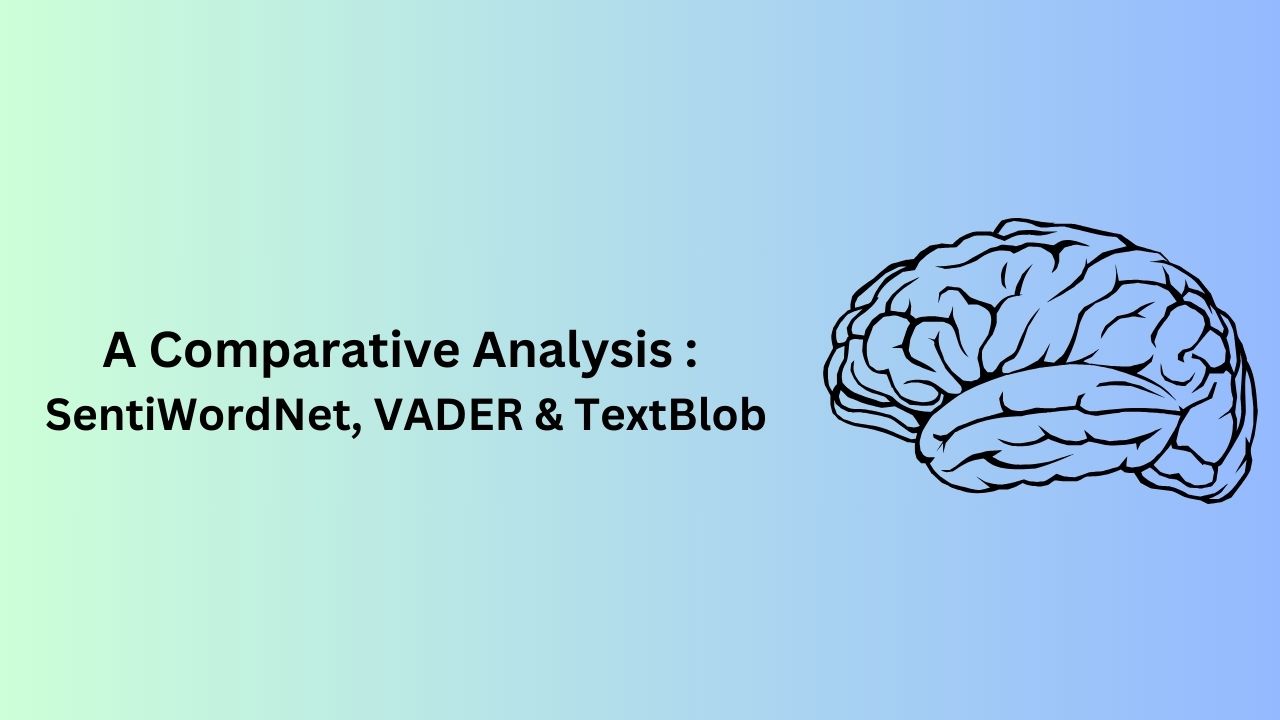Sentiment analysis, also known as opinion mining, is a natural language processing (NLP) technique that aims to determine the sentiment or emotional tone expressed in a piece of text. It has numerous applications in areas such as social media monitoring, customer feedback analysis, and market research. In this article, we’ll explore and differentiate three popular sentiment analysis techniques: SentiWordNet, VADER (Valence Aware Dictionary and sEntiment Reasoner), and TextBlob, with examples to illustrate their strengths and weaknesses.
Table of Contents
Understanding SentiWordNet
SentiWordNet is a lexical resource for sentiment analysis that assigns sentiment scores to words based on their semantic meaning. It relies on WordNet, a lexical database that groups words into synsets (sets of synonyms). SentiWordNet provides three sentiment scores for each word:
- Positive Score: Indicates the positivity of a word (ranging from 0 to 1).
- Negative Score: Indicates the negativity of a word (ranging from 0 to 1).
- Objective Score: Reflects the neutrality of a word (1 minus the sum of the positive and negative scores).
Example:
Let’s analyze the sentiment of the sentence: “The weather is beautiful.”
- “beautiful” has a positive score of 0.9, no negative score, and an objective score of 0.1.
- “weather” and “the” may not be present in SentiWordNet, so they would have an objective score of 1.
Strengths:
- Provides fine-grained sentiment scores.
- Handles nuanced sentiment analysis.
Weaknesses:
- Limited coverage for words.
- Doesn’t consider context.
Unveiling VADER
VADER (Valence Aware Dictionary and Sentiment Reasoner) is a pre-trained sentiment analysis tool designed for social media text. It considers both the valence (positivity or negativity) and intensity of sentiments in a text. VADER returns a compound score ranging from -1 (extremely negative) to 1 (extremely positive).
Example:
Let’s analyze the sentiment of the sentence: “I love this product! It’s fantastic.”
- VADER might return a compound score close to 1, indicating a strongly positive sentiment.
Strengths:
- Works well with informal text and social media language.
- Provides a single, interpretable score.
Weaknesses:
- Limited to English.
- May not handle sarcasm or irony effectively.
TextBlob’s Take on Sentiment Analysis
TextBlob is a Python library that simplifies text-processing tasks, including sentiment analysis. It uses a lexicon-based approach and machine learning techniques. TextBlob provides two sentiment attributes:
- Polarity: Ranges from -1 (negative) to 1 (positive), with 0 indicating neutrality.
- Subjectivity: Ranges from 0 (objective) to 1 (subjective), indicating the degree of opinion or emotion.
Example:
Let’s analyze the sentiment of the sentence: “The food was terrible.”
- Polarity might be close to -1, indicating a negative sentiment.
- Subjectivity might be close to 0, suggesting an objective statement.
Strengths:
- Easy to use and implement.
- Supports multiple languages.
Weaknesses:
- Limited to a single polarity score.
- Less fine-grained compared to SentiWordNet.
Conclusion
Each of these sentiment analysis techniques has its unique strengths and weaknesses. The choice of technique depends on the specific use case and the data you’re working with. If you need fine-grained sentiment analysis and can handle limited coverage, SentiWordNet might be the way to go. For quick and easy sentiment analysis of social media data, VADER could be a suitable choice. And if you need a versatile and easy-to-use option, TextBlob might be the best fit. Ultimately, the effectiveness of any technique depends on the quality and domain of the data it’s applied to, so experimentation and evaluation are essential steps in choosing the right tool for the job.





